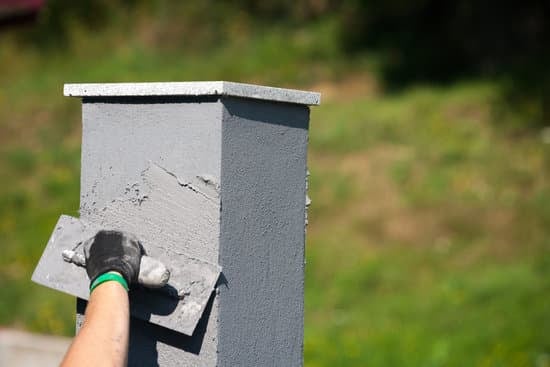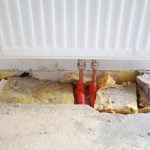Are capital home improvements tax deductible in 2018? This is a common question among homeowners looking to make upgrades to their property. Understanding the ins and outs of capital home improvements and their tax implications is crucial for making informed financial decisions. In this article, we will explore what qualifies as a capital home improvement, the tax implications of these improvements in 2018, how to determine if they are tax deductible, and more.
Making improvements to your home can be both exciting and daunting. Whether it’s renovating the kitchen, adding a new bathroom, or installing solar panels, these upgrades can significantly increase the value of your property. However, it’s important to understand which expenses qualify as capital home improvements and what impact they may have on your taxes.
In order to fully grasp the tax implications of capital home improvements, it’s essential to have a clear understanding of what qualifies as such. From there, homeowners can assess the potential tax benefits or limitations associated with these improvements in 2018. By familiarizing yourself with the rules and regulations surrounding this topic, you can make well-informed decisions regarding your home upgrades and taxes.
What Qualifies as a Capital Home Improvement?
When it comes to home improvements, it’s important to understand the difference between regular repairs and capital improvements. Capital home improvements are those that add value to your home, prolong its life, or adapt it for new uses. Here are some examples of what qualifies as a capital home improvement:
- Adding a room or an additional bathroom
- Upgrading the heating, ventilation, and air conditioning (HVAC) system
- Installing a new roof or siding
- Renovating the kitchen with new cabinets and appliances
These types of improvements are considered investments in your property rather than just maintenance, and they have specific tax implications in 2018.
In general, any home improvement that is meant to keep your home in good condition but does not add significant value or prolong its life is considered a regular repair and is not eligible for tax deductions. Understanding what qualifies as a capital home improvement is crucial when it comes to determining the tax implications of these projects.
The Tax Implications of Capital Home Improvements in 2018
Making capital improvements to your home can have significant tax implications in 2018. While not all home improvements are tax deductible, certain renovations may qualify for tax benefits. It is important to understand the tax implications of capital home improvements, as it can help you maximize potential tax benefits and avoid any unforeseen tax liabilities.
Under current tax laws, capital home improvements that increase the value of your home may be considered as a capital asset. This means that the cost of the improvement is added to the basis of your home for future sale purposes. However, it also means that you may be eligible for certain tax deductions or credits related to these improvements.
For example, energy-efficient upgrades such as installing solar panels or energy-efficient windows and doors may qualify for federal energy tax credits. These credits can help reduce your overall tax liability, providing you with a financial incentive for making environmentally friendly home improvements. It’s important to consult with a tax professional to ensure that you are taking advantage of all available tax benefits related to your specific capital home improvements.
| Tax Implications | Capital Home Improvements |
|---|---|
| Increased Basis | Cost of improvement added to the basis of your home |
| Federal Energy Tax Credits | Energy-efficient upgrades may qualify for tax credits |
How to Determine if Your Capital Home Improvements Are Tax Deductible
Repairs
Repairs are considered to be necessary to maintain the property’s current value and keep it in good condition. These can include fixing a leaky roof, repairing a broken window, or patching up a hole in the wall. Generally, these costs are not tax deductible as they are considered part of the regular upkeep and maintenance of the property.
Improvements
On the other hand, improvements are investments that increase the value and usefulness of your property. These can include adding a new room, installing a new HVAC system, or renovating the kitchen. Capital home improvements such as these may be tax deductible under certain circumstances.
Check Eligibility for Home Office Deduction
If you have made capital home improvements to an area of your home that is used exclusively for business purposes, you may be eligible for a home office deduction. This can include renovations to create a dedicated home office space or upgrades to improve the functionality of an existing business area within your home. Be sure to consult with a tax professional to understand how these improvements may qualify for tax deductions under IRS guidelines.
In some cases, making energy-efficient capital home improvements can make you eligible for specific tax credits from the government. This includes upgrades such as installing solar panels, energy-efficient windows and doors, or upgrading to energy-efficient HVAC systems. These tax credits can provide significant savings and should be factored into your decision-making process when deciding on which home improvement projects to undertake.
Documentation and Record Keeping for Tax Deductible Capital Home Improvements
Importance of Documentation and Record Keeping
When it comes to claiming tax deductions for capital home improvements, documentation and record keeping are essential. In order to prove that the expenses were indeed for qualified home improvement projects, you will need to keep detailed records of all your expenses, including receipts, invoices, contracts, and any other relevant documents. Without proper documentation, you may not be able to substantiate your claims in the event of an audit by the IRS.
Types of Documentation Required
The types of documentation needed for tax deductible capital home improvements can vary depending on the nature and scope of the project. For smaller projects, such as replacing a few windows or installing a new roof, you should keep copies of all receipts and invoices related to the materials and labor costs. For larger projects, such as a whole-house renovation or room addition, you may also need to keep copies of building permits, architectural plans, and contractor contracts.
Organizing Your Records
It is important to organize your records in a systematic manner so that they are easily accessible when needed. Consider creating a dedicated folder or digital file for all documents related to your capital home improvements. It may also be helpful to categorize your expenses by project or by type (e.g.
materials vs. labor) to make it easier to track and reference them later on. By staying organized from the start, you can save yourself time and stress when it comes time to prepare your taxes or respond to any inquiries from tax authorities.
Limitations and Restrictions on Tax Deductible Capital Home Improvements
When it comes to claiming tax deductions for capital home improvements, there are certain limitations and restrictions to be aware of. The IRS has specific guidelines on what qualifies as a tax-deductible capital home improvement, and it’s important for homeowners to understand these limitations in order to maximize their tax benefits.
One limitation to consider is the difference between repairs and improvements. While some home repairs may be deductible as a business expense, they do not qualify as capital improvements for tax purposes. Capital improvements typically add value to the home, prolong its useful life, or adapt it to new uses. Examples of capital improvements include adding a new room, remodeling a kitchen, or installing a new heating system.
Another important restriction is the requirement to itemize deductions in order to claim tax benefits for capital home improvements. For those who choose to take the standard deduction instead of itemizing, they will not be able to deduct their capital home improvement expenses. It’s essential for homeowners to keep detailed records of all improvement costs and consult with a tax professional to ensure they meet all requirements for claiming deductions.
In addition, there are limitations on which expenses can be deducted and special rules that apply in certain situations. For example, costs associated with routine maintenance or repairs are generally not deductible as capital improvements. Homeowners should carefully review IRS guidelines and seek professional advice when navigating these limitations and restrictions in order to make the most informed decisions about their taxes.
| Limitations | Restrictions |
|---|---|
| Difference between repairs and improvements | Requirement to itemize deductions |
| Types of expenses that can be deducted | Special rules applying in certain situations |
Consult a Tax Professional
When it comes to maximizing tax benefits on home improvements, consulting a tax professional is crucial. They can provide valuable insights and guidance on how to take advantage of available tax incentives and deductions. Here are some tips for homeowners who want to ensure they are getting the most out of their capital home improvements in terms of tax benefits:
1. Seek Expert Advice: It’s important to consult with a qualified tax professional who specializes in real estate and property taxation. They can help you navigate through complex tax laws and regulations, ensuring you make informed decisions about your home improvements.
2. Keep Records Organized: Maintain detailed records of all your capital home improvement expenses, including receipts, invoices, and contracts. A tax professional can use this documentation to accurately determine which expenses qualify for tax deductions.
3. Stay Informed About Tax Laws: Tax laws and regulations pertaining to capital home improvements can change from year to year. By working with a tax professional, you can stay updated on any changes that may affect your eligibility for tax benefits.
By following these tips and working with a knowledgeable tax professional, homeowners can maximize their tax benefits on capital home improvements and ensure they are in compliance with current regulations. This proactive approach can lead to significant savings and peace of mind when it comes to taxes related to home improvements.
Conclusion
In conclusion, it is important for homeowners to be well-informed about the tax implications of capital home improvements in 2018. Understanding what qualifies as a capital home improvement and how to determine if they are tax-deductible can have significant financial implications. While certain improvements may qualify for tax deductions, there are limitations and restrictions that homeowners should be aware of.
Additionally, proper documentation and record-keeping are essential for claiming tax deductions on capital home improvements. Keeping track of receipts, contracts, and other relevant documents will help homeowners substantiate their claims in the event of an audit. Consulting a tax professional can also provide valuable insights and tips for maximizing tax benefits on home improvements.
Ultimately, by staying informed and seeking professional guidance when necessary, homeowners can make informed decisions about their capital home improvements and taxes in 2018. This can lead to potential savings and a better understanding of the financial impact of home improvement projects. It is always advisable to stay up-to-date with current tax laws and regulations to ensure compliance and take full advantage of any potential deductions available.
Frequently Asked Questions
Are Capital Improvements on Your Home Tax-Deductible?
Capital improvements on your home are not tax-deductible in the year in which they are completed. However, they can be added to the cost basis of your home, which can help reduce any potential capital gains taxes when you sell your home.
It’s important to keep track of all receipts and documentation related to these improvements for tax purposes.
What Happens if You Don’t Have Receipts for Capital Improvements?
If you don’t have receipts for capital improvements, it may be more challenging to prove the cost basis of your home when it comes time to sell it. This could result in paying higher capital gains taxes if you’re unable to provide evidence of the improvements’ costs.
Keeping thorough records of all expenses related to home improvements is essential for potential future tax implications.
Do I Have to Depreciate Capital Improvements?
In most cases, you are required to depreciate capital improvements over time if they are considered part of your business property or rental property rather than your primary residence. This depreciation is used to recover the cost of the improvement over its useful life, and it affects your annual income by reducing the taxable income from that property each year as a deduction.
It’s important to consult with a tax professional or accountant regarding specific rules and regulations related to depreciating capital improvements.

I’m thrilled to have you here as a part of the Remodeling Top community. This is where my journey as an architect and remodeling enthusiast intersects with your passion for transforming houses into dream homes.





